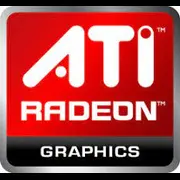ATI Radeon HD 5770

ATI Radeon HD 5770: Nostalgia or Practicality in 2025?
We analyze the legend of 2009 through the lens of modern requirements.
Architecture and Key Features
TeraScale 2 Architecture: Legacy of the Past
The ATI Radeon HD 5770, released in 2009, is based on the TeraScale 2 architecture. This second generation of AMD technology was aimed at improving energy efficiency and performance in DirectX 11. The card was manufactured using a 40nm process, which was cutting-edge at the time.
Outdated Technologies vs. Modern Standards
The HD 5770 does not support modern features such as ray tracing (RTX), DLSS, or FidelityFX. Its capabilities are limited to basic tessellation effects and multi-threaded rendering. For 2025, this is an archaic functionality: for instance, even AMD's FSR (FidelityFX Super Resolution) requires hardware support that the HD 5770 lacks.
Memory: Modest Specs for Modern Tasks
GDDR5 and 128-Bit Bus
The card is equipped with 1 GB of GDDR5 memory and a 128-bit bus, delivering a bandwidth of 76.8 GB/s. In comparison, even budget GPUs in 2025 (for example, AMD Radeon RX 6500) utilize GDDR6 with bandwidth starting at 224 GB/s.
Limitations in Gaming and Applications
1 GB of video memory is critically insufficient for modern games. Even at minimal settings, titles like Cyberpunk 2077 or Hogwarts Legacy require at least 4 GB. While it may suffice for office tasks or video playback, professional applications (Blender, Premiere Pro) will operate extremely slowly.
Gaming Performance: A Return to the 2010s
Average FPS in Older Titles
In games from the 2010 era (like Skyrim or Battlefield 3), the HD 5770 shows 30-45 FPS on high settings at 1080p. However, in modern AAA games, even on low presets at 720p, the frame rate seldom exceeds 15-20 FPS.
Resolutions and Ray Tracing
The card is designed for 1080p, but by 2025, this standard is outdated. There is virtually no support for 1440p or 4K: the lack of memory and computing power makes rendering impossible. Ray tracing is absent at the hardware level.
Professional Tasks: Not the Best Choice
Video Editing and 3D Modeling
For editing in DaVinci Resolve or Adobe Premiere, the HD 5770 is suitable only for basic tasks. Rendering 4K video would take hours. In 3D software (Blender, Maya), OpenCL acceleration works, but NVIDIA CUDA cores, which are relevant in 2025, are not available.
Scientific Calculations
The card is not optimized for computations such as machine learning or simulations. Its performance in OpenCL tasks is 5-10 times lower than that of modern budget GPUs (e.g., NVIDIA RTX 3050).
Power Consumption and Heat Dissipation
TDP of 108W: Modest Appetite
In the context of 2025, the HD 5770 is energy-efficient: its TDP is 108W. In comparison, the NVIDIA RTX 4060 consumes 115W but offers 8-10 times more power.
Cooling and Cases
The standard cooler manages to keep the card cool, but it becomes noisy under load (35-40 dB). Cases with good ventilation are recommended. In compact builds, overheating may occur due to passive heat build-up from adjacent components.
Comparison with Competitors
Direct Competitors in 2009
In its price category ($109 in 2009), the HD 5770 competed with the NVIDIA GTX 260. In terms of performance, they were close, but AMD had the edge in energy efficiency.
Modern Analogues
In 2025, the HD 5770 can be compared to budget GPUs such as the Intel Arc A380 ($120) or AMD Radeon RX 6400 ($130). These cards support DirectX 12 Ultimate, have 4-6 GB of memory, and are 3-4 times faster in games.
Practical Advice
Power Supply and Compatibility
- Minimum PSU: 450W (with headroom for CPU and peripherals).
- Compatibility: PCIe 2.0 x16. On motherboards with PCIe 4.0/5.0, the card will work but without speed gains.
Drivers and OS
Official driver support has been discontinued. The last version for Windows 10 is Adrenalin 2015. On Windows 11, conflicts may occur. For operation in Linux, use the open-source Mesa drivers.
Pros and Cons
Pros:
- Low power consumption.
- Support for older operating systems and games.
- Quiet operation at idle.
Cons:
- Insufficient memory for modern tasks.
- Lack of support for DirectX 12 Ultimate and new APIs.
- Limited compatibility with drivers.
Final Conclusion: Who is the HD 5770 for in 2025?
This graphics card is a choice for retro hardware enthusiasts and owners of old PCs who need to replace a burned-out GPU without upgrading their systems. It may still perform adequately for 2010s games but is useless for modern projects.
Is it Worth Buying New?
New units are virtually non-existent. If you are offered an HD 5770 as "new" for $50-70, it's a gamble. It’s better to consider modern budget models: the AMD Radeon RX 6500 ($150) or Intel Arc A580 ($180), which guarantee support for relevant technologies.
In summary: The HD 5770 is a museum exhibit rather than a tool for work or gaming in 2025. However, for those nostalgic for the early 2000s, it represents a piece of history.
Basic
Memory Specifications
Theoretical Performance
Miscellaneous
Benchmarks
Compared to Other GPU
Share in social media
Or Link To Us
<a href="https://cputronic.com/en/gpu/ati-radeon-hd-5770" target="_blank">ATI Radeon HD 5770</a>